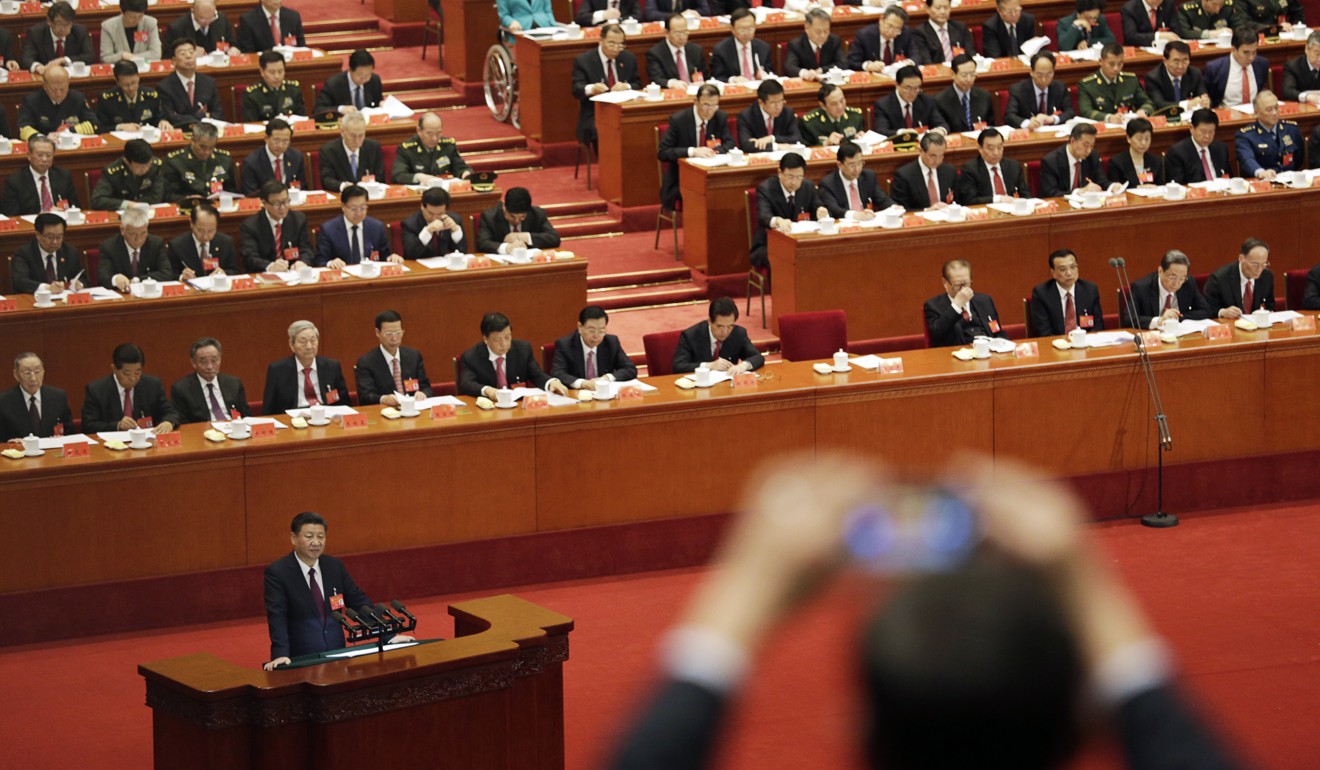
If you think Xi will soften on debt to spur Chinese growth, think again
Scaling back plans to curb debt to ensure a higher growth rate would involve the rejection of the key principles of ‘Xiconomics’ itself
The idea that Beijing will soften its stance on debt accumulation to spur growth for 2018 is a complete misreading of the policy intentions of President Xi Jinping.
For Xi, the most powerful Chinese leader since Deng Xiaoping or even Mao Zedong, the biggest result from a three-day closed-door economic work conference this week is the elevation of “Xiconomics” into “Xi Jinping Economic Thought” – a move that means his ideas will be the guiding principal for the country’s economic polices.
So what is Xiconomics? To put it simply, it means GDP growth is no longer the only game in town. China still wants economic growth, of course, but there will be stricter preconditions.
Growth must be sustainable and not artificially pumped by debt, growth must be clean without severely polluting the air or water supply, and growth must be inclusive so that there won’t be millions of people being left behind by the boom.

For these reasons, Xi listed financial risk control, the environment and poverty reduction as the top three priority for the Communist Party in the future, not the headline economic growth figures.
To suggest that Xi would make compromises over debt or the environment to spur growth is to say that Xi would deny Xiconomics – and the probability of that is zero.
So why Xi is trying to de-emphasise GDP growth for 2018 and beyond? The reason is a changing China.
Delivering a rapid economic growth rate had been an overriding priority for the ruling Communist Party for best part of the past four decades.
The job of bolstering growth became very pronounced in periods of financial crisis such as 1998 or 2008, when Beijing had to Bao Ba, or to defend the growth rate from falling below 8 per cent, to avoid social unrest.
That’s not the case any more for Xi. As Xi rightly sees it, a high growth rate or rapid growth in material creation alone will no longer be enough to please the Chinese people.
People from Heilongjiang on border with Russia to Hainan on the South China Sea are complaining more about health care, pollution and unfairness than slow growth.
Xi is trying to address these challenges. That’s why this week’s central economic work conference communique, which usually addresses general topics, included a list of issues that could be linked to everyday lives of Chinese people, from the excessive homework for school pupils to the difficulties of making an appointment with a doctor.
Some may argue that the trade-off between growth and debt is still a choice Xi has to make. That is partly true, but for the foreseeable future it is neither reasonable nor necessary for Xi to soften his stance on curbing debt for the sake of growth.
China’s average annual growth rate over the past five years, Xi’s first term in office, was 7.1 per cent, a rate that is high than enough for China to realise the goal of doubling per capita GDP in a decade by 2020, and it means Xi can tolerate a lower growth rate for the next three years.

The message is consistent with the central economic work conference statement that Xi will not ease on debt control.
First of all, Xi told the central bank to rigorously control the money and credit supply valve – no easing, only tightening. Secondly, Xi told the usual heavy borrowers, state enterprises and local governments, to cut their debt. Leverage reduction remains the hallmark of Xi’s supply-side structural reform.
Some may argue that, despite Xi’s intentions, reality may yet force his hand. If China’s growth started to collapse, Xi would have no other choice but to rely on the debt-fuelled growth model again.
In a narrow sense, this argument is valid but the “if” is too big to be taken seriously.
For Xi, as long as the economy is moving away from the old model of debt reliance, heavy pollution and widening gap, he is very likely to permit a significant slowdown in headline growth – a growth rate of 6 per cent or even lower will be perfectly fine for the next three years.
In fact, Xi is sending a message to the Communist Party cadres by setting “three-year” goals for debt cut and poverty reduction. In other words, these goals are larger than annual growth, and Xi will look at whether local government officials can deliver these assignments instead of growth.
The view that Beijing would rush to bolster growth was right in 1998 and 2008, but it was wrong and misleading to assume it will be the case for a new era under Xi.

